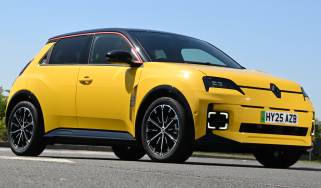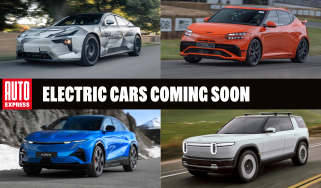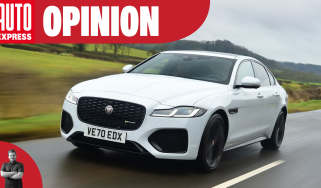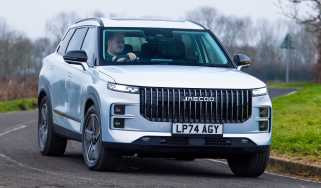The man who saved Renault is leaving. Here’s why you’ll miss Luca de Meo
Luca de Meo revived Renault from crippling losses and gave us the new 5 and Alpine A390. He’s one of the greats
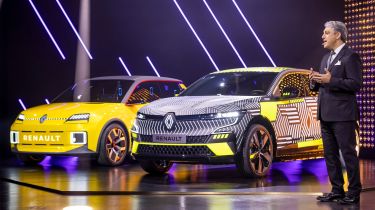
Luca de Meo, Renault’s CEO, is the powerhouse of the European car industry. Five years ago – in the summer of Covid-19 – he was appointed to salvage the French car maker, which had just posted a 7.3-billion Euro loss (more than £6 billion). In February he announced the best profits in the group’s history – and next month he’ll be leaving on a high.
Unless you’re an investor, you might not care. But if you care about affordable small cars, charismatic electric cars or Alpine sticking with sports cars and Formula 1 despite neither being an easy win, then you should care about Luca de Meo. Because he stands for all those things and plenty more besides.
He helped make Renaults great again
Let’s start with the new Renault 5. A design proposal to bring back the chic supermini was rejected by the previous management team; de Meo arrived, saw it and instantly fast-tracked the electric city car. It’s won a string of awards including the European Car of the Year title, Renault’s second in succession following the triumphant Scenic E-Tech electric, an accolade I backed when serving on that jury of 58 motoring journalists.
The electric Megane – the first all-new car of the de Meo era – would have had smaller wheels and far less sporty looks, had the passionate Italian not injected the Renaultsport version’s details into the base car. His argument that it was a hot hatch was a prime example of De Meo’s passion getting the better of him, but the sharp steering and turn of pace do make for an engaging EV.
Instantly De Meo turned Renault’s product pipeline upside down, killing several underwhelming projects and introducing the Symbioz to attack the popular small SUV market, flagship Rafale (which admittedly won’t break the German premiums’ stranglehold over the UK) and, boldly, reviving the company’s ugly but beloved sixties hatch, the Renault 4, as an electric SUV.
The overarching objective is to introduce GFC – ”great f***ing cars” – design boss Laurens van den Acker told me, a philosophy all car lovers can get behind.
Make alliances, not adversaries
Previously, Carlos Tavares – the man who turned around Peugeot-Citroen, bought Vauxhall/Opel, then merged the company with Fiat-Chrysler to create Stellantis – was also a powerhouse of Europe’s car industry. His cost-cutting expertise and success with bigger SUVs such as Peugeot’s 3008 and 5008 undoubtedly influenced de Meo’s turnaround plan for Renault. But Tavares’s confrontational character – often battling with politicians, car dealers and colleagues – meant he left his post early.
De Meo, at a dinner early in his tenure, told me China’s grip on the electric car supply chain was one thing that kept him up at night. But instead of calling for tariffs on Chinese EVs (Tavares’ initial position before he reversed it by launching the Leapmotor joint-venture), de Meo decided that if you can’t beat ‘em, join ‘em.
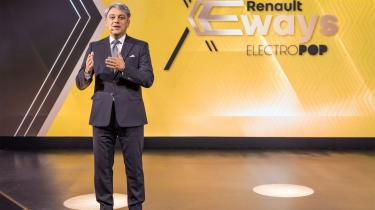
He established the Advanced China Development Centre, a skunkworks where Renault Group could learn the Chinese’s ultrafast EV development practices. While the Megane took four years to develop from design freeze to engineering sign-off, the 5 and 4 arrived in three, and next year’s forthcoming Twingo took closer to two years to engineer.
Another far-sighted alliance – Horse Powertrain – was forged when Renault folded its combustion engine, hybrid and gearbox assets in with Chinese automotive behemoth Geely, whose European brands include Volvo, Lotus and taxi-maker the London Electric Vehicle Company. Such ‘old-school’ engineering where demand is dwindling typically weighs on legacy car makers’ share prices. But Renault and Geely co-created a separate joint venture that will engineer powertrains for industry-wide customers, also supplying markets such as Latin America and Africa that will go electric more slowly.
The Renault CEO also spotted the shift to software-defined vehicles and invested in the group’s digital capabilities, while enlisting expert Google to power the group’s in-car operating system. Android voice control and Google Maps work brilliantly in cars such as the Scenic and 5, while bigger rivals such as Volkswagen are struggling to compete with their in-house user experience.
Make sub-brands into bigger brands
I last spoke to the Renault Group CEO on a windswept cliffside in Dieppe, France, at the unveiling of Alpine’s new A390 electric crossover. He was holding court with a few journalists, recounting how visiting the motorsport brand’s factory was one of the first things he did in 2020 upon becoming the company’s leader.
“Alpine was supposed to be closed because, after the A110, we had no plan for this place,” de Meo recalled. “I started to think about how I could give new life to this brand, which has something [magical]. I've done that in other companies, [reviving] Abarth, [launching] Cupra, that's my specialty.”
While Abarth has bumbled along, de Meo’s brainchild Cupra has gone from being SEAT’s sporty trim level to a standalone brand bagging almost 2 per cent of the European market (219,000 units in 2024). Cars such as the distinctive Formentor and Born EV – which is better to drive than its Volkswagen ID.3 counterpart – make more money for VW than the Spanish brand it acquired in 1986.
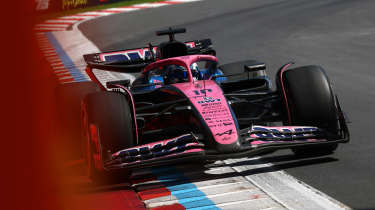
De Meo quickly rebranded the Renault F1 team as Alpine to promote the brand, which has grown its motorsport presence into endurance racing. Former Ferrari engineer Philippe Krief – a de Meo recruit – runs the outpost, which is unleashing a range of electric cars including the A390, A290 hot hatch, an all-electric replacement for the A110 coupe and a V6 hybrid hypercar. There’s no guarantee it will work, but the brand is fighting for a future that wasn’t even a pipe dream five years ago.
Making small cars profitable again
The driven Italian’s final crusade has been to convince European regulators to relax the emissions and safety rules on compact cars, which are making superminis unaffordable for many consumers.
“Between 2015 and 2030, a Renault medium-sized car will have increased in terms of cost by 20 per cent, whereas for small cars it’s 40 per cent,” he has said. “That’s something we have to reverse because a small car such as the next-generation Twingo with its smaller battery and smaller size with less steel, plastic and parts, will [have a] 75 per cent lower CO2 impact cradle-to-grave than the average European car.
Teaming up with Stellantis chairman John Elkann, de Meo has spoken publicly to call for policies – such as Japan’s kei car fiscal incentives – that will help sub four-metre cars grow from just five per cent of the European market. While there is clearly commercial self-interest at stake here (French and Italian car makers are more exposed in small cars than German ones), de Meo has reconfigured Renault to be among the leaders in lowering its cars’ carbon footprint. And reversing the tide that has seen Ford ditch the Fiesta, and most car makers exit the city car segment will boost customer choice.
Making Gucci and Yves St Laurent great again
At the time of writing, Renault Group’s share price is down more than eight per cent, while Kering – the struggling French luxury brand group de Meo is rumoured to be joining – is trading up.

An auto industry executive going to run a luxury house is “very unusual”, an apparel industry leader told Auto Express. “Because luxury brand margins are so immense, they typically just keep marketing and driving revenue with zero attention to costs. They’ve never had anyone from outside the industry to worry about costs – until Luca de Meo arrives.”
“There comes a time in one’s life when one knows the job is done,” said Luca de Meo in a statement issued by Renault Group. “We have faced immense challenges in less than five years and achieved what many thought impossible.
“The results speak for themselves: they are the best in our history. We have a strong team, an agile organisation and a strategic plan ready for the next generation of products. That is why I have decided it is time for me to hand over the baton. I am leaving a transformed company, poised for the future, to apply my experience to other sectors and embark on new adventures.” Renault – and the auto industry’s loss – looks set to be Kering’s gain.
Tell us which new car you’re interested in and get the very best offers from our network of over 5,500 UK dealers to compare. Let’s go…
Find a car with the experts


